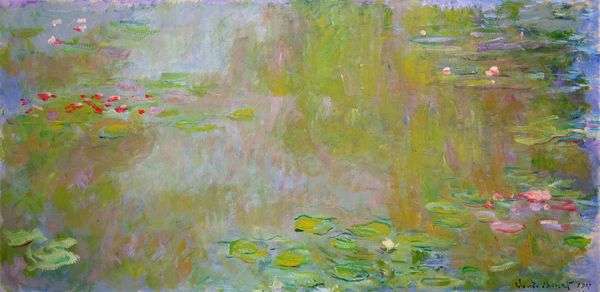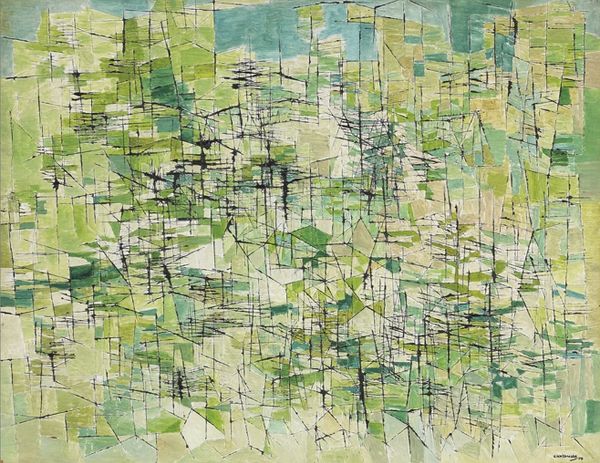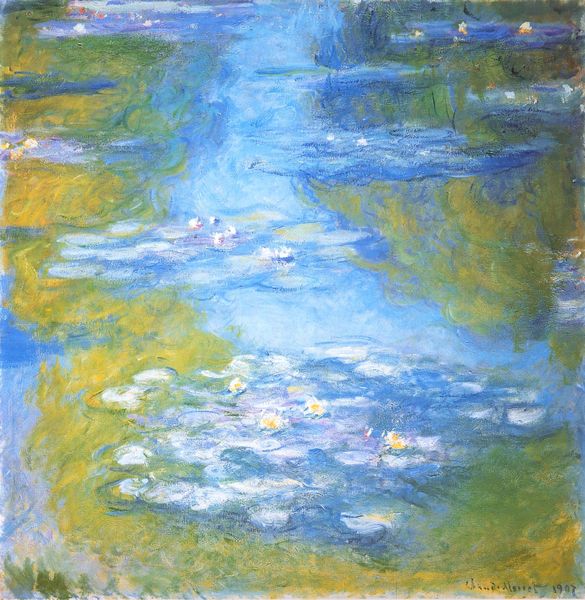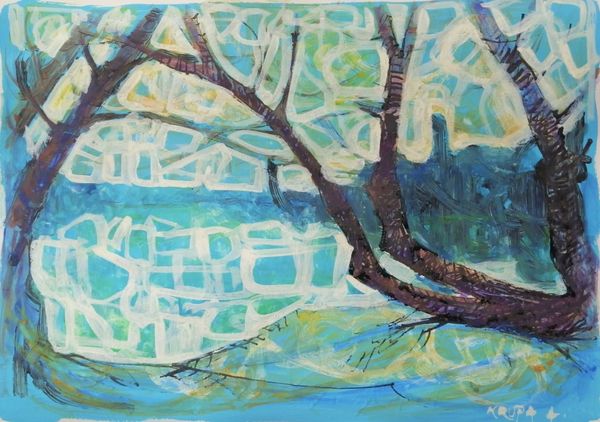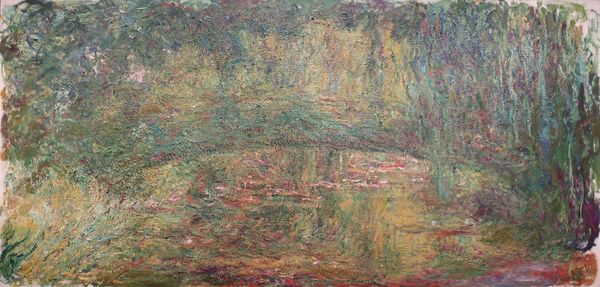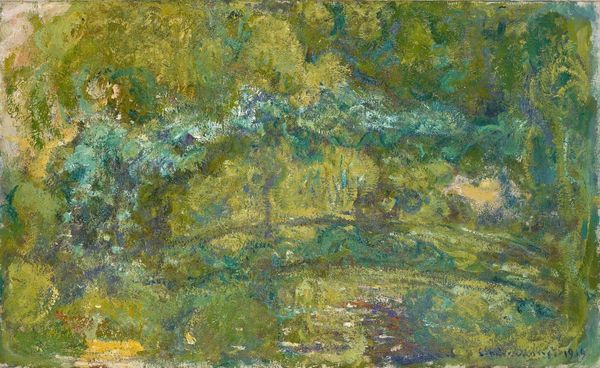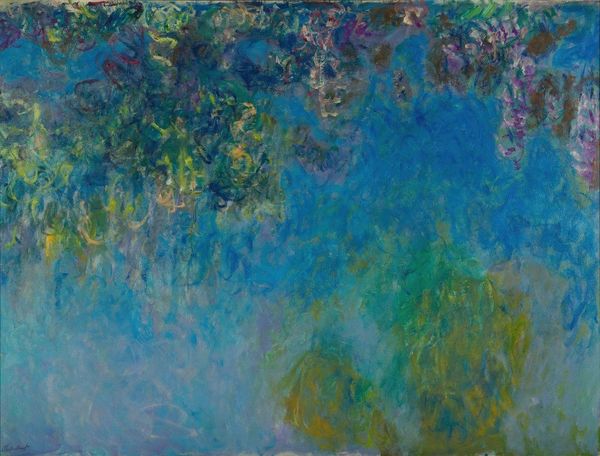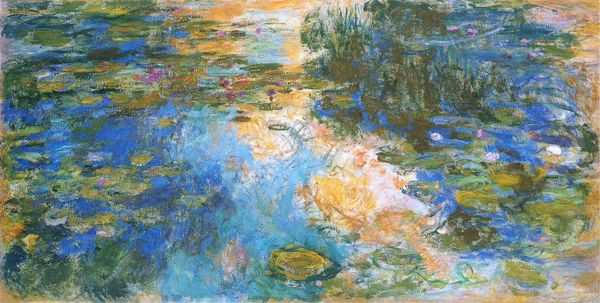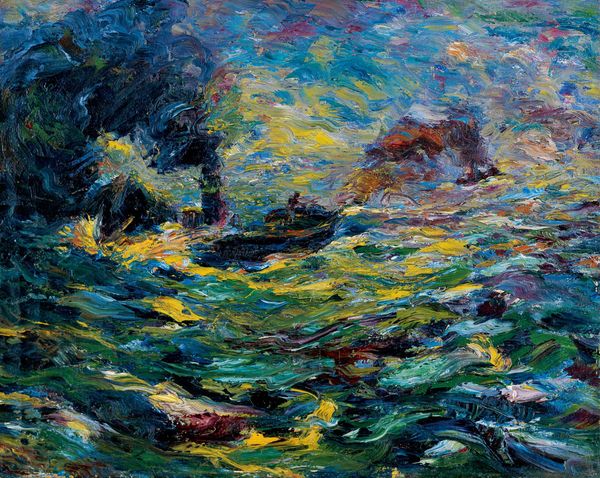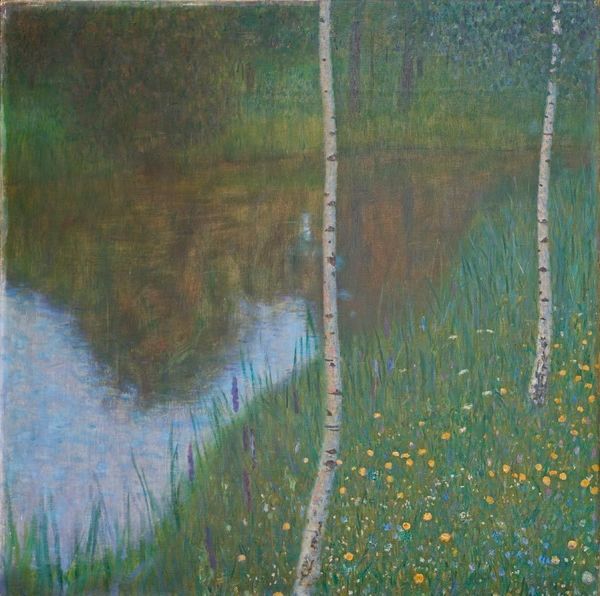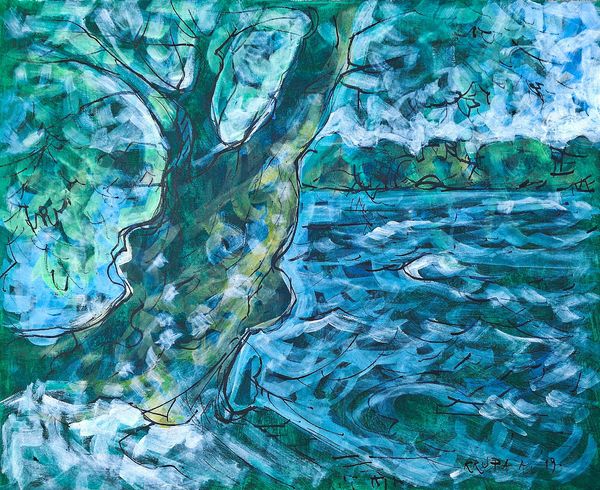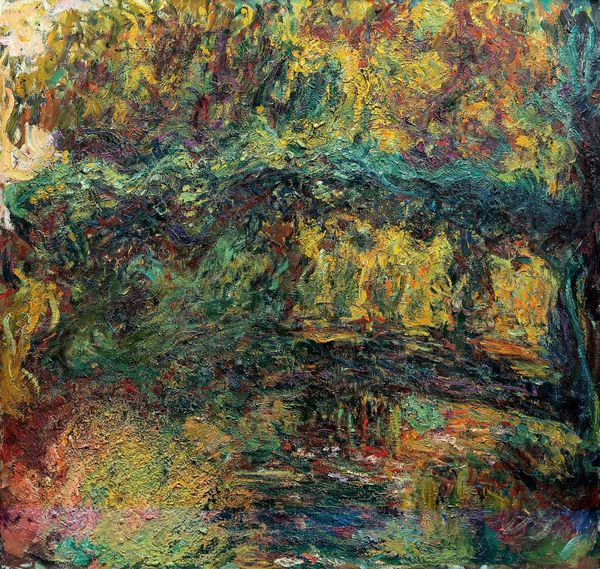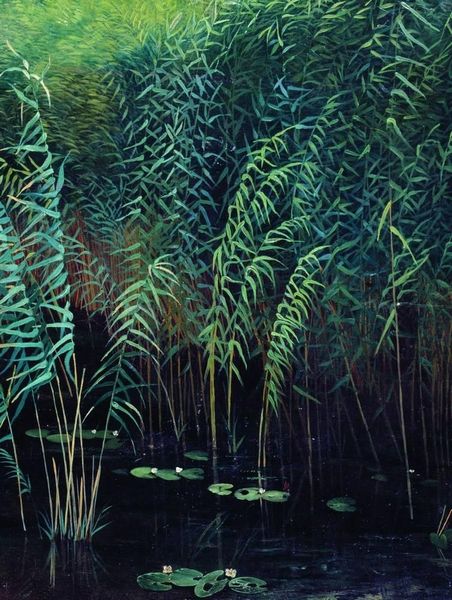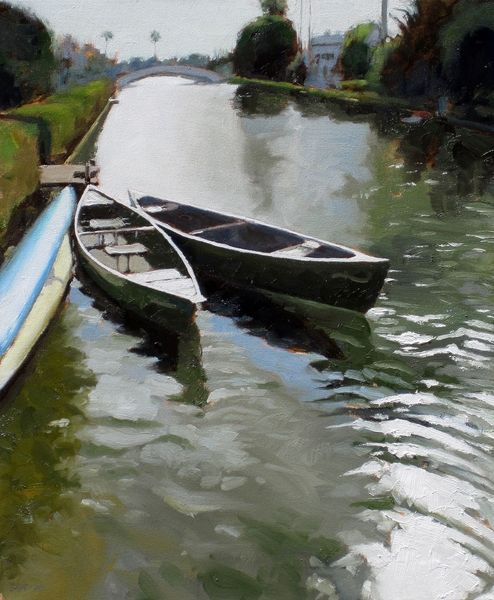
plein-air, oil-paint
#
impressionism
#
grass
#
plein-air
#
oil-paint
#
landscape
#
impressionist landscape
#
water
Copyright: Public domain
Editor: This is Claude Monet's *The Row Boat*, painted in 1887 using oil paint in a plein-air style. I'm struck by the texture – the way the strokes almost vibrate on the canvas. How do you interpret this work? Curator: Monet’s focus extends beyond a simple landscape; it delves into the relationship between leisure and the evolving social structures of the late 19th century. Can you see how the painting captures a fleeting moment of bourgeois relaxation? The impressionistic style, almost radical for its time, mirrors the changing societal landscape where traditional hierarchies were being challenged. Editor: So, it’s not just about pretty scenery, but about the people experiencing that scenery? Curator: Precisely. The water, reflecting both the sky and the surrounding vegetation, blurs the lines between reality and perception. How might this blurring speak to the emerging feminist theories of the time, challenging rigid gender roles and expectations? Editor: I hadn’t thought about it that way. The boat itself, seemingly still and empty, takes on a different meaning. It's almost like a stage waiting for its actors. Curator: Exactly! And consider the implications of *plein-air* painting. Monet moved outside the studio, engaging directly with the environment. What does that tell us about the artist's position in relation to nature and the industrializing world? Editor: I see how understanding the social context adds so much depth to the work. Curator: By examining *The Row Boat* through a critical lens, we uncover layers of meaning related to class, gender, and the shifting dynamics of modern life. What a striking convergence. Editor: I'll never look at an Impressionist landscape the same way again. Thank you!
Comments
No comments
Be the first to comment and join the conversation on the ultimate creative platform.
